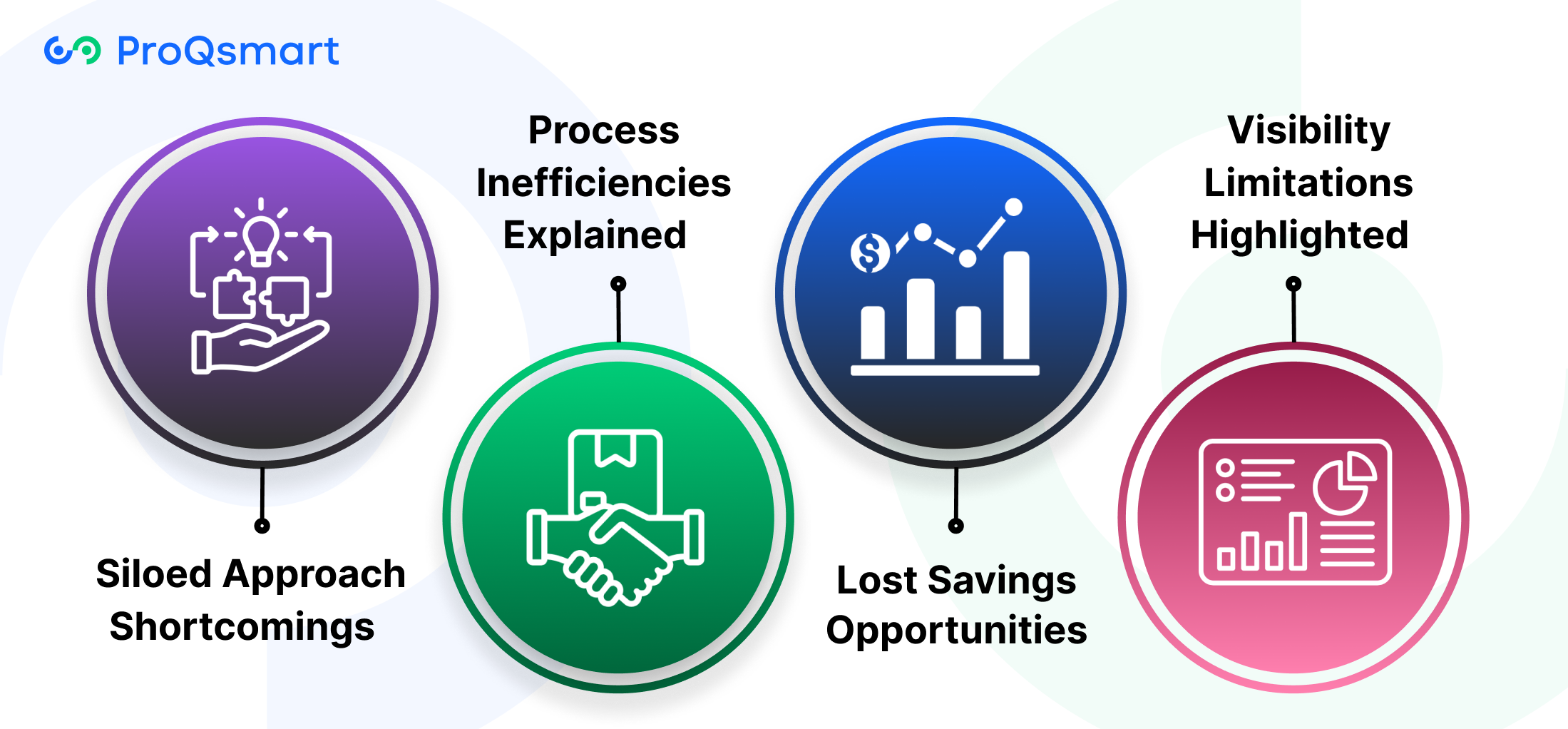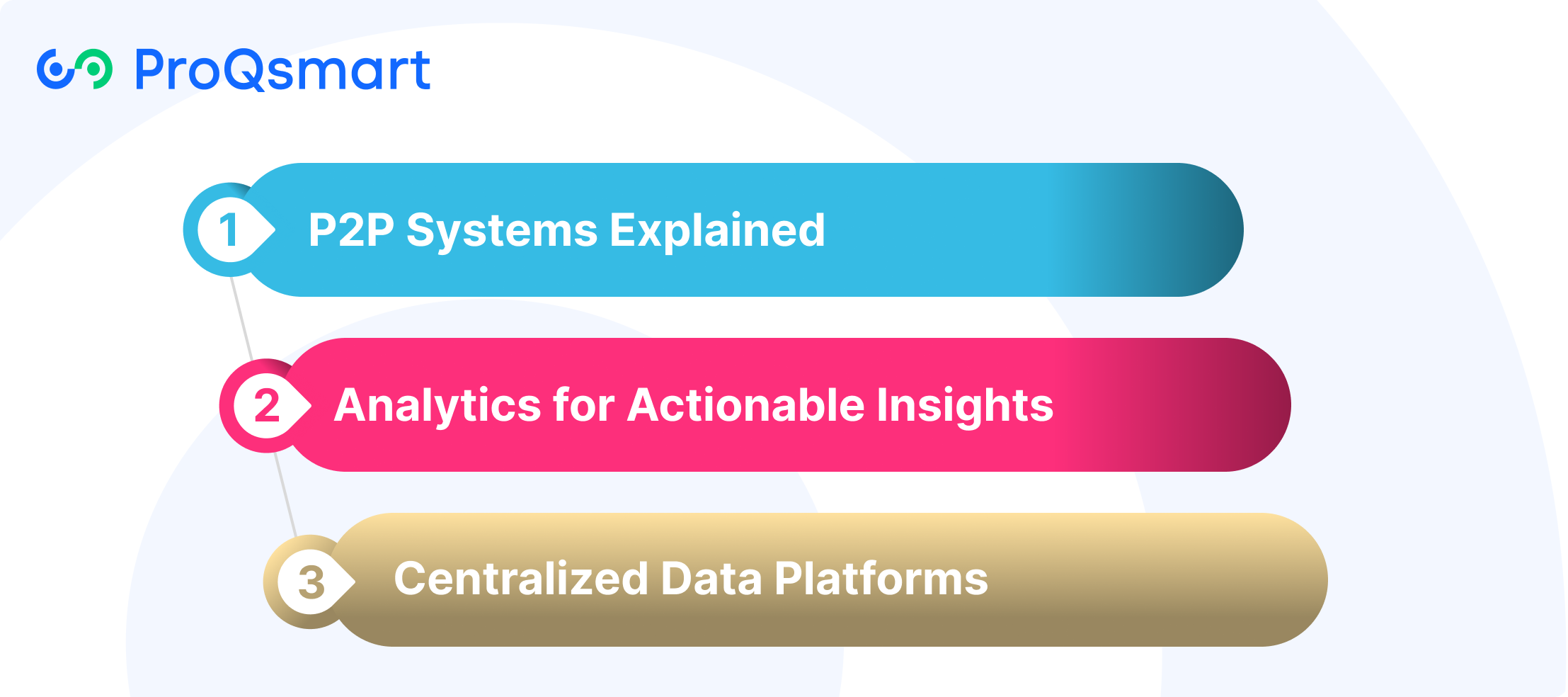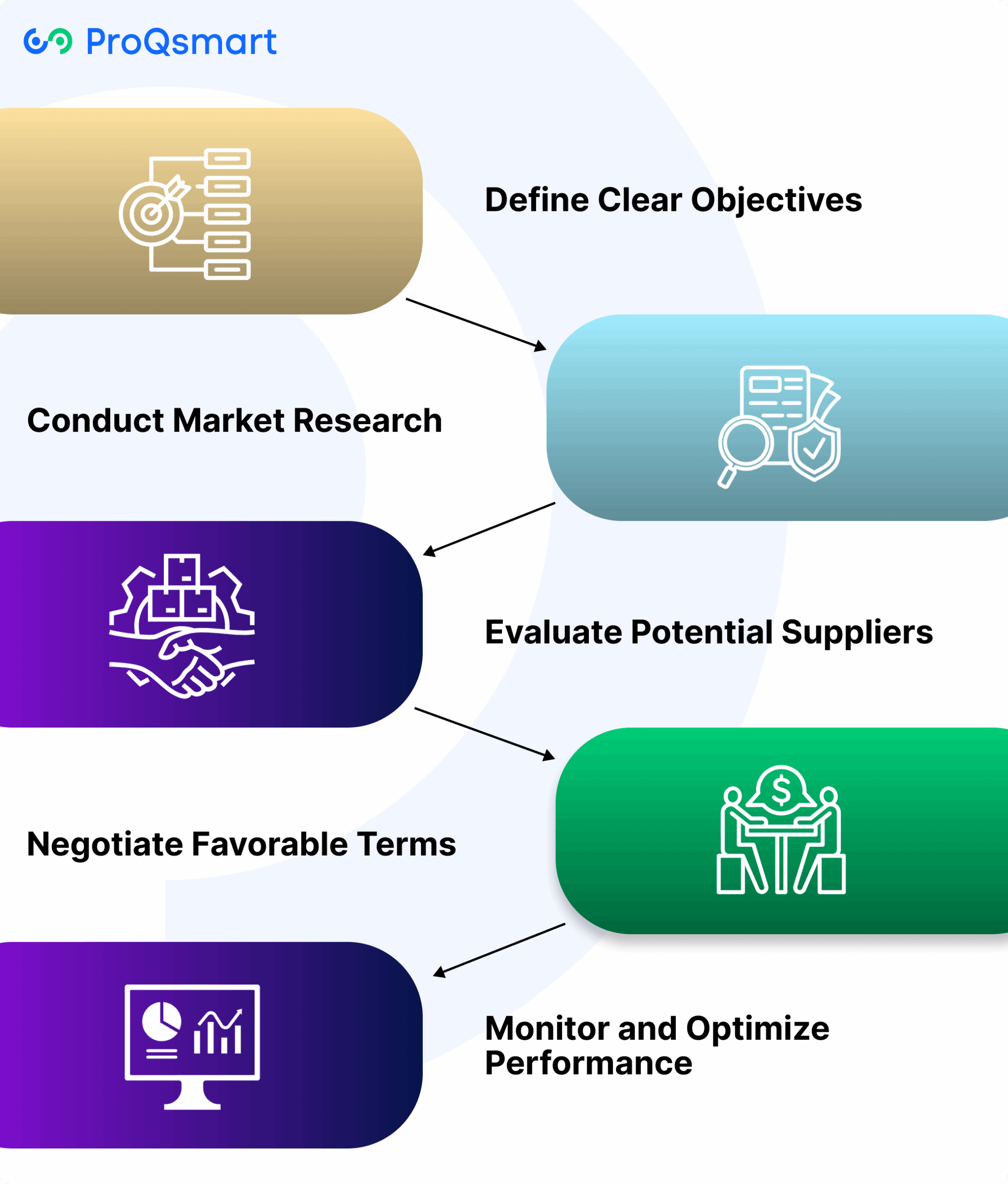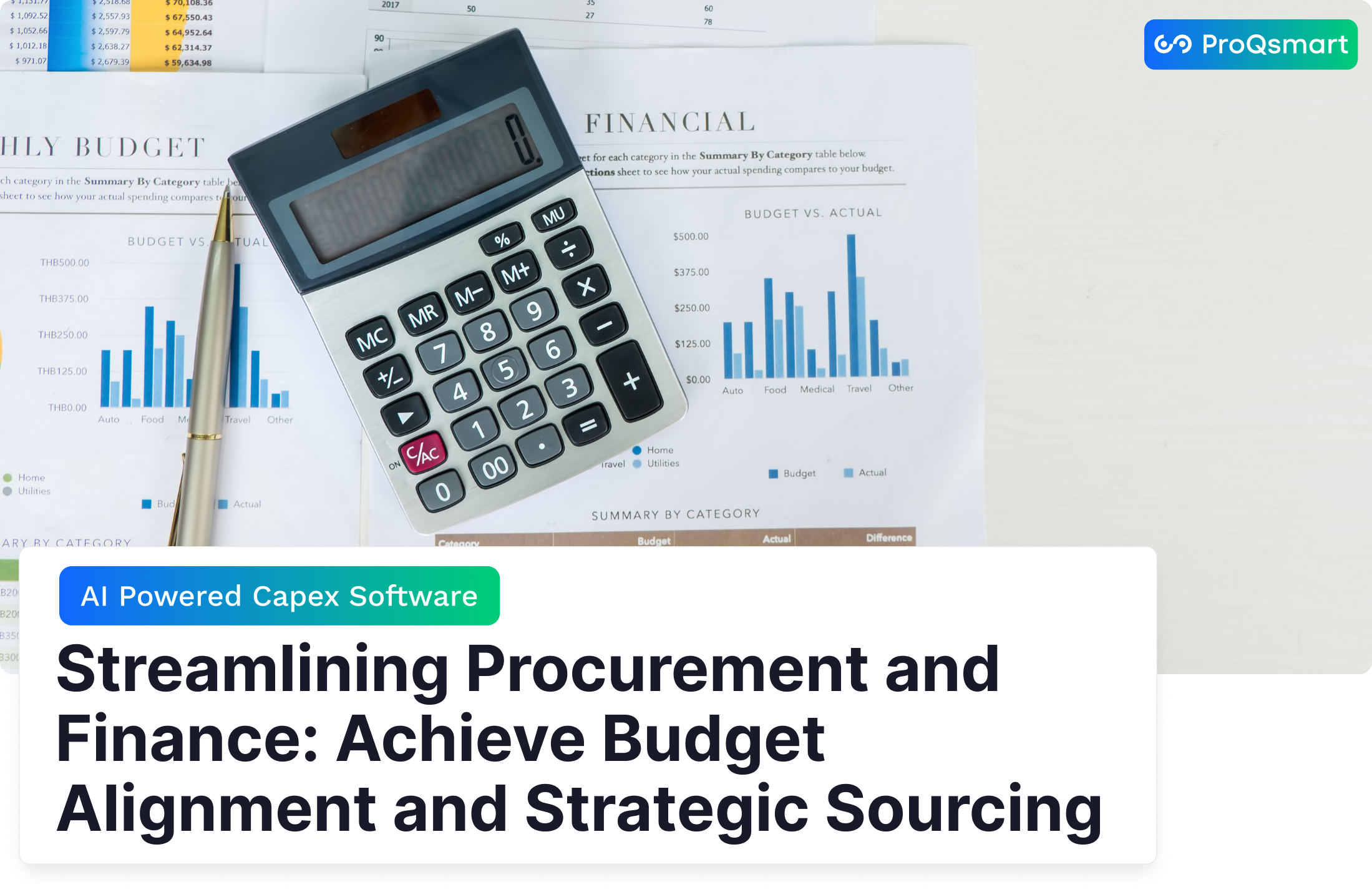In procurement, sourcing refers to the strategic process of identifying, evaluating, and selecting suppliers to acquire goods or services that meet an organization’s needs. It plays a critical role in optimizing costs, ensuring supply chain efficiency, and building strong supplier relationships.
By focusing on sourcing strategies, businesses can streamline operations, mitigate risks, and achieve sustainable growth. Effective procurement sourcing involves analyzing market trends, negotiating favorable terms, and ensuring compliance with industry regulations.
For professionals in procurement, understanding these processes is essential to drive value and maintain a competitive edge. In this guide, we’ll explore actionable strategies and insights to enhance your sourcing approach and achieve measurable results in your procurement operations.
Why Integrate Procurement and Finance?

Integrating procurement and finance functions makes for a more streamlined playbook, aligning interests to make faster, clearer decisions, strengthen longstanding supplier relationships, and deliver impactful savings all around.
By aligning these departments, businesses can realize potentially millions of dollars in savings. You can achieve savings of 20 – 25% with reduced cycle times, improved supplier pricing and increased compliance and control.
This integration creates an easier budgeting process, allowing for strong financial planning and corporate spend to be maximized. Beyond that, it equips teams to take on tail-end spend management.
This little discussed, yet high impact area makes up roughly 20% of total spend and touches about 80% of suppliers.
Siloed Approach Shortcomings
Managing procurement and finance as two disconnected silos usually leads to missed opportunities and inefficient processes. First, if goals and objectives are misaligned between departments, it can slow the decision-making process and hurt departmental workflows.
For instance, procurement might have cost reduction targets but finance has cash flow targets leading to tension. Clear signs of siloed operations such as redundant work efforts and data reporting, disparate financial reporting, and prolonged payments cycles act as red flags indicating a need for integration.
Process Inefficiencies Explained
Without coordination among these offices, this creates significant redundancies. So, for example, duplicate data entry by procurement and finance can lead to mistakes and slow transactions.
Eliminating this inefficiency by streamlining workflows through intuitive platforms like ProQsmart increases efficiency. ProQsmart eliminates repetitive workflows, keeps procurement aligned to budgets with built-in real time tracking and consolidates supplier management processes.
-
Redundant manual entries
-
Delayed invoice approvals
-
Lack of standardized supplier evaluations
Lost Savings Opportunities
Together, these disjointed efforts lead to lost savings. Integrated systems allow for shared intelligence, revealing new efficiencies in both sourcing and purchasing.
Tail-end spend, where many inefficiencies lie, is one area that sees huge collaboration benefits. Proactive measures including leveraging analytics within platforms like ProQsmart help maximize savings and identify them early in the procurement cycle.
Visibility Limitations Highlighted
Connected planning based on real-time visibility is essential to smart, forward-looking investments. Tools such as ProQsmart can offer dashboards, configurable-standard reports, and a supplier-specific portal that can cut inquiry-related calls by 60%.
These key metrics can range from payment status to payment cycle times to supplier performance.
Benefits of Procurement-Finance Alignment
Aligning procurement and finance functions not only prevents unnecessary roadblocks. It truly sets the stage for stronger performance across the organization. This collaborative strategy improves cost control, deepens supplier connections, and fosters fiscal openness.
Together they provide greater predictability and accountability for spending while creating a forum for joint strategic decision-making that allows firms to pursue future value creation.
Enhanced Cost Reduction Tactics
Aligning procurement and finance creates a host of opportunities for more sophisticated sourcing strategies. Second, aggregating procurement through bulk purchasing can reduce the unit cost and improve the efficiency of budgets. Organizations can realize these savings and more by lowering the total cost of ownership.
They can do this by taking integrated approaches, such as lifecycle cost analysis. Through increased collaboration, these departments can find hidden opportunities to save money. To mitigate the risk, they focus on maximizing payment terms and using their classic supplier loyalty programs.
Through platforms like ProQsmart, businesses can automate quality workflows, gain visibility into their budgets in real-time, and drive millions in cost savings.
Accurate Financial Reporting Advantages
When procurement data is made available in real-time, this feeds directly into financial reporting processes, providing more accurate and up-to-date information about spending activity and future commitments. Integrated systems, like AI-powered procurement platforms, improve efficiency in financial analysis and reporting precision.
Metrics such as spend visibility, purchase order accuracy, and supplier compliance are increased and make possible the data-driven decisions.
Stronger Supplier Connection
Alignment of the two functions builds stronger relationships with suppliers and funders by ensuring on-time payments and encouraging a culture of collaboration. Proactive engagement through effective sourcing tools, such as supplier value management solutions, fosters loyalty and minimizes supply chain risks.
Optimized Cash Flow Strategies
When procurement professionals can better manage accounts payable and create integrated finance-procurement workflows, cash flow flexibility increases dramatically. Critical procurement strategies such as maximizing working capital, automating invoice processing, and taking advantage of early payment discounts can make a significant difference.
|
Benefit |
Impact |
|
Cost reduction |
Lower expenses through bulk purchasing |
|
Financial reporting |
Accurate and timely insights |
|
Supplier relationships |
Stronger loyalty and engagement |
|
Cash flow |
Improved flexibility and efficiency |
Technology’s Role in Streamlining Sourcing

Such technology integration in the procurement sourcing space has drastically changed the landscape of how time efficiency is measured. It offers technology that smooths out processes and fosters communication across divisions.
Indeed, with the help of innovative solutions, sourcing can be more transparent, cost-effective and strategic to the organizational mission and priorities.
P2P Systems Explained
Automated Procurement-to-Pay (P2P) systems radically change the landscape of how procurement workflows can function. These systems automate repetitive tasks such as purchase order creation, invoice matching, and payment processing, reducing manual errors and saving time.
For example, a P2P system can automatically spot mismatched invoices before payment, improving accuracy while avoiding disruptions in service. By improving visibility, P2P systems increase your control over procurement activities.
For one, they enable organizations to track spending and supplier performance in real-time. With technology, effective P2P systems provide frictionless integration with financial management software. They include automated compliance checks and customizable dashboards to track procurement metrics.
Analytics for Actionable Insights
Analytics plays an important role in identifying hidden patterns and making more informed strategic sourcing decisions. Utilizing AI to analyze historical data allows you to easily forecast demand, find opportunities to save costs, and more effectively evaluate supplier performance.
For example, ProQsmart’s AI-powered sourcing, forecasting, and auditing improves sourcing by illuminating poor suppliers or expensive processes. By leveraging data to develop sourcing strategies, procurement teams can become more proactive in anticipating market trends and risks.
Technology can improve almost every facet of sourcing from:
-
Predictive analytics tools
Centralized Data Platforms
Centralized data platforms offer an essential centralized space for public and private-sector partners to share real-time procurement information. This increases transparency, alignment, and accountability among teams and stakeholders.
ProQsmart really shines in this regard, with real-time collaboration, automated workflows, and more. Data security and privacy best practices, regular audits, and a thorough training process for discovered teams on platform usage have become essential.
How to Set a Successful Sourcing Strategy

Formulating a winning sourcing strategy involves a methodical strategic sourcing process tailored to your business objectives. By tackling these major steps, companies can develop effective sourcing solutions that generate value, reduce costs, and build collaborative supplier partnerships.
1. Define Clear Objectives
Using best practices to define specific, measurable goals helps you build a framework for successful sourcing. Goals such as lowering operational costs by a set percentage, increasing supplier quality metrics or achieving certain sustainability targets give a clear focus.
Defined goals guide decisions, ensuring actions lead to measurable outcomes. Steer clear of unclear, scattershot goals that do not prioritize, which will result in wasted efforts.
Clear, well-defined expectations, both inside the organization and with suppliers, go a long way in avoiding potential delays or contention.
2. Conduct Market Research
Comprehensive market research helps find qualified suppliers, while monitoring relevant industry trends and developments. Evaluate the suppliers’ capabilities, the state of market pricing, the use of technology and automation, and competitive positioning.
These include supplier financial health, innovation capacity, and their alignment with your sustainability goals. For instance, utilizing solutions like ProQsmart’s AI-driven analytics makes vendor RFPs more manageable and efficiently pinpoints the most trustworthy partners.
3. Evaluate Potential Suppliers
Supplier evaluation should center on quality, reliability, cost, and compliance. Using criteria such as delivery timelines, technical expertise, and sustainability practices ensures consistency.
Best practices include involving stakeholders early and using platforms like ProQsmart to automate assessments.
4. Negotiate Favorable Terms
Negotiation needs to do more than fight for cost savings, but set the stage to realize long-term value. Negotiations are a two-way street, and creating trust during negotiations will foster improved collaboration.
Strategies that work include data prep, knowledge of market benchmarks, and tools such as ProQsmart that integrate real-time changes, collaboration, and transparency.
5. Monitor and Optimize Performance
Frequent expectations of performance verification makes it more likely that suppliers perform at or above desired levels. Subjective metrics such as delivery accuracy and compliance rates are important.
ProQsmart’s supplier performance monitoring features deliver actionable intelligence, guaranteeing a path to constant improvement.
Practical Steps for Successful Integration
Integrating procurement and finance requires a structured approach that aligns both functions towards shared objectives, streamlines the procurement process, and leverages technology. This lays the groundwork for impactful partnership, smooth operations, and the ability to track outcomes in the overall procurement process.
Establish Shared Objectives and KPIs
Setting shared goals and KPIs is essential in getting procurement and finance on the same page. Begin with defining goals that align with the priorities of your organization, whether that’s minimizing costs, increasing supplier performance, or improving budget compliance.
As an example, one obvious shared KPI would be cost savings realized compared to capital expenditures. These metrics create a motivating climate of transparency and accountability, inspiring both teams to move toward shared metrics.
Implement specific, measurable goals for doing more with less, for example, decreasing procurement cycle times by 15%. Hold frequent check-ups to monitor your progress and course-correct as needed.
Shared dashboards or other tools, like ProQsmart’s real-time tracking of these KPIs, can go a long way toward visualizing this information, facilitating collaboration, and enabling more timely decision-making.
Build a Collaborative Framework
A strong framework fosters collaboration by establishing clear lines of communication and opportunities for collective problem-solving. Frequent cross-departmental check-ins, collaborative design labs/workshops, or even aligned processes help solidify relationships among planning and engineering staff.
For example, with new software ProQsmart’s collaboration tools, multiple stakeholders can update bids and budgets in real-time, keeping everyone’s efforts in sync.
Key elements include:
-
Shared platforms for data access and reporting.
-
Clear roles and responsibilities for streamlined workflows.
-
Continuous training to improve cross-functional understanding.
Leverage Automation Tools
Automation reduces the chance for manual mistakes and frees up resources to focus on higher-level, more strategic work. Tools such as ProQsmart can automate workflows, check supplier performance and even manage compliance, ensuring efficiency.
For example, automating e-tenders reduces time spent, and AI-informed intelligence leads to better decision-making around sourcing for capital expenditure.
Widely used technology solutions range from integration-centric ERP systems to AI-supported applications like ProQsmart that link procurement to inventory management in a seamless way.
Conclusion
Aligning procurement and finance is a strategic approach that drives measurable improvements in decision-making, and budget control. By leveraging technology to streamline workflows and adopting a structured methodology, organizations can achieve greater efficiency and ensure alignment with overarching business objectives. Each step taken toward integration strengthens operational capabilities and lays the foundation for long-term success.
The strategies outlined here provide a starting point for creating a procurement system that operates with precision and delivers impactful results. By implementing these practices, organizations can reduce risks, enhance transparency, and position themselves for sustainable growth in an increasingly dynamic marketplace.
To learn how ProQsmart can support your procurement transformation and help you align procurement with finance seamlessly, explore our solutions and book a demo today.




